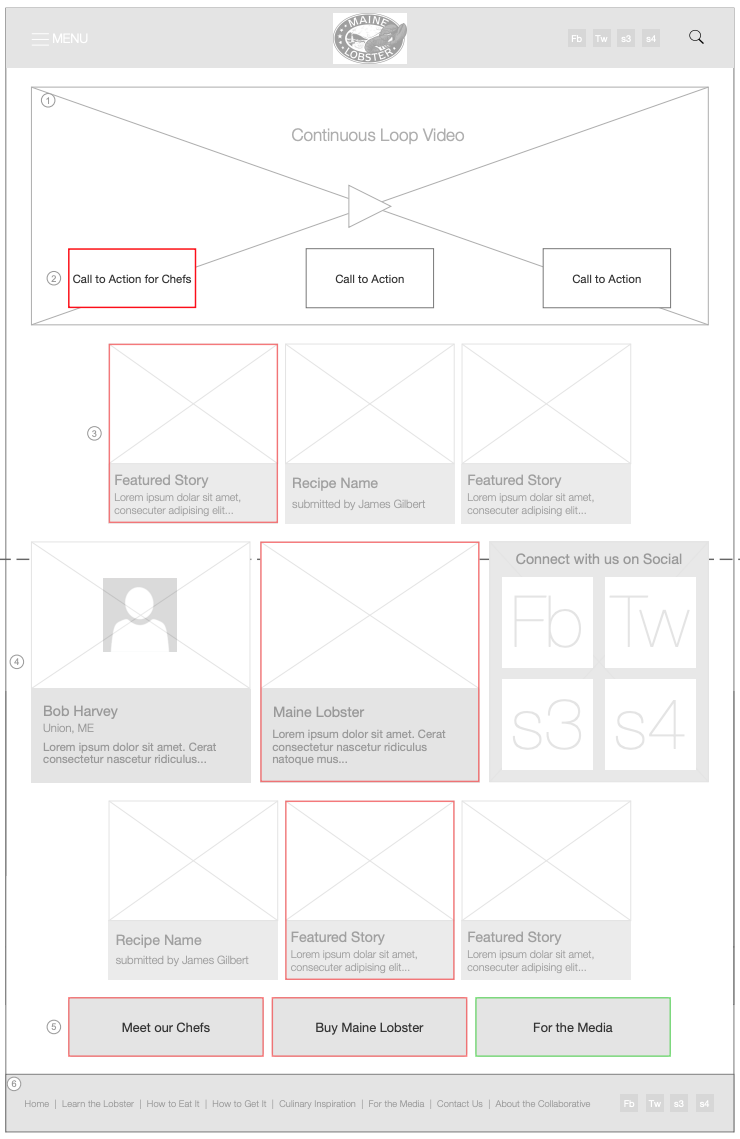Maine Lobster Marketing Collaborative
The Maine Lobster Marketing Collaborative wants the world to know that not all lobster is Maine Lobster. This project had many internal and external stakeholders with many different perspectives. Managing these differing expectations began with the delicate approach of reiterating their needs back to them in terms of their primary goals and how satisfying each of those would affect secondary goals, page layouts and site functionality. Getting stakeholders on the same page is key to success. Sometimes it takes one phone call. Sometimes it requires some calls, emails, sitemaps, sketches, etc. No matter the effort, this will set the project up for success.
While giving the Collaborative the platform to tell their story, it was important that the site remained concise, as always. They had a lot of content (from a previous site) that needed to be evaluated for continued use and they wanted new content to match their new approach. Considering their current needs with the potential for future growth brought me to a templated strategy with interchangeable modules and Calls to Action (CTAs) that can be changed in the CMS based on evolving business goals. CTAs are often buttons or other cues, usually visual, that lead a user down a specific path.
Also a key to success: know your developers’ skill sets and how much you can push them within your resources (in this case - people, technology, capital and time). One of the primary business goals in this project required the site to be segmented by key audiences and not by content types (backend developers tend to build based on databases, not audiences). Seems simple but remember that everything is intertwined. Consider index (list) pages and search results, for instance. How will results be “called up” and organized? If you end up shoehorning things into place then it’s time to reconsider the strategy. If you’ve done your research, and had the appropriate conversations in the discovery phase and when selecting solution(s), you’ll be in a good place to tackle the challenges ahead. This is an example of how I used my process to lead my team around foreseeable issues to design something effective and buildable.


